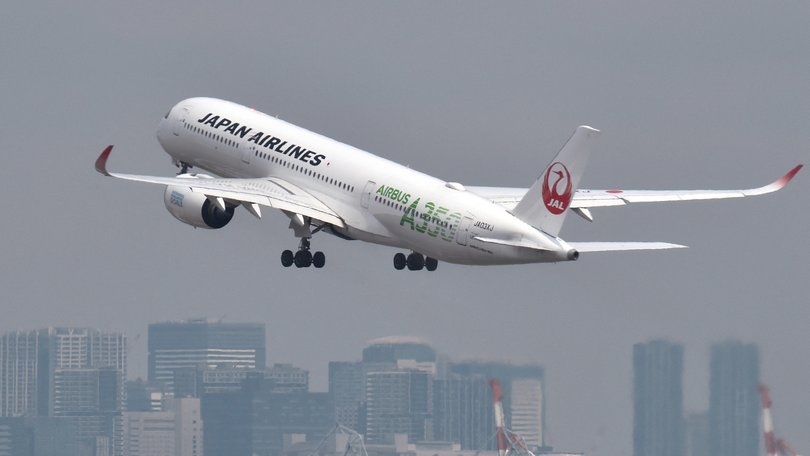Japan Airlines flight JAL123 rescuers break silence to crush ‘missile’ conspiracy theories

Amid the spread of false information about the 1985 Japan Airlines jumbo jet crash into Osutaka Ridge in Ueno, Gunma Prefecture, former Self-Defence Forces personnel who were involved in the mountain rescue efforts and subsequent wreckage recovery work testified about the situation at a July 28 symposium held in the Diet Building.
JAL Flight 123, a Boeing 747 carrying 524 passengers and crew, crashed into Osutaka Ridge on the evening of Aug 12, 1985.
Only four people survived, all with serious injuries. With 520 fatalities, the disaster remains the deadliest single-aircraft accident in history.
Sign up to The Nightly's newsletters.
Get the first look at the digital newspaper, curated daily stories and breaking headlines delivered to your inbox.
By continuing you agree to our Terms and Privacy Policy.The flight was bound from Haneda Airport in Tokyo to Itami Airport near Osaka City when a rupture of the aft pressure bulkhead mid-flight over Sagami Bay in Kanagawa Prefecture caused the loss of all hydraulic lines, rendering the aircraft uncontrollable.
There is increasing concern as false information continues to spread on social media.
This includes claims that a Self-Defence Force missile shot down the plane, which the Defence Ministry says is “misinformation.”
They fear that as memories of the 1985 accident fade, more people may come to believe these falsehoods.
About 230 people gathered in the large conference room of the House of Representatives First Members’ Office Building in Tokyo.
Seven former SDF personnel from the ground, maritime and air forces then recounted the events of 40 years ago after a moment of silence for the victims.
“There were multiple ridges leading to the crash site, which made setting up the search route challenging,” one person testified.
Another person shared, “Even a month after returning, I struggled with acute stress disorder and experienced hallucinations” of the passengers and crew.
After an investigation lasting over 18 months, the Aircraft Accident Investigation Commission (a predecessor of the Japan Transport Safety Board, or JTSB) concluded that the accident was caused by damage to the aft pressure bulkhead. This damage led to a sudden rush of air from the cabin, blowing off the vertical stabiliser and other parts, and causing the complete loss of hydraulic systems, which rendered the aircraft uncontrollable.
Boeing Co, the aircraft’s manufacturer and repairer, also admitted that there was an error in a bulkhead repair conducted seven years before the accident.
However, theories such as “the SDF shot down the plane with a missile” and “the SDF used flamethrowers at the crash site at Osutaka Ridge to destroy evidence” continue to circulate online through videos and other media.
These stories are often created by taking fragments of past statements by relevant parties or news reports and interweaving them with speculation.
In 2011, the JTSB published an explanation of its accident investigation report. Addressing other questions that had been submitted alongside its findings, it explicitly denied the missile theory, stating, “No components of gunpowder or explosives were detected in the aircraft wreckage, and there is no basis to suspect a missile.”
Two former Maritime Self-Defence Force personnel who were assigned to the destroyer that was falsely accused of accidentally firing a missile in Sagami Bay testified that day.
“On the day of the accident, our ship was moored at a shipyard in Tokyo Bay and was not carrying any ammunition,” said one of the officials.
About the “destruction of evidence” theory, former Ground Self-Defense Force Chief of Staff Gen. Toshiya Okabe, said, “Given the unexpected location of the accident, it would have been impossible to transport an amount of fuel and portable flamethrowers - which could not be procured overnight - into the deep mountains, secretly incinerate everything, and withdraw by the next morning without prior site confirmation.”
Mr Okabe, who reached the site by helicopter as a member of the GSDF’s 1st Airborne Brigade and participated in rescue efforts, said, “The government should respond to this to protect the public’s trust in the SDF.”
Kentaro Watanabe, a YouTuber who recalled having “believed (the theories) from online information and books,” posted videos aligned with the “SDF conspiracy theory” from 2020 to 2023.
However, as he listened to and learned from pilots and engineers, he noticed inconsistencies in the SDF conspiracy theory. When he posted videos refuting the conspiracy theory, he said he was then subjected to baseless slander, including accusations like, “You must have received money from JAL.”
When asked about this issue in the House of Councillors’ Committee on Foreign Affairs and Defence in April, Defence Minister Gen Nakatani reaffirmed that the SDF had no involvement in the crash, adding, “We will continue to respond thoroughly to this.”
An official of the Defence Ministry said, “We will continue to send out accurate information, including the minister’s response (denying the conspiracy theory).”
